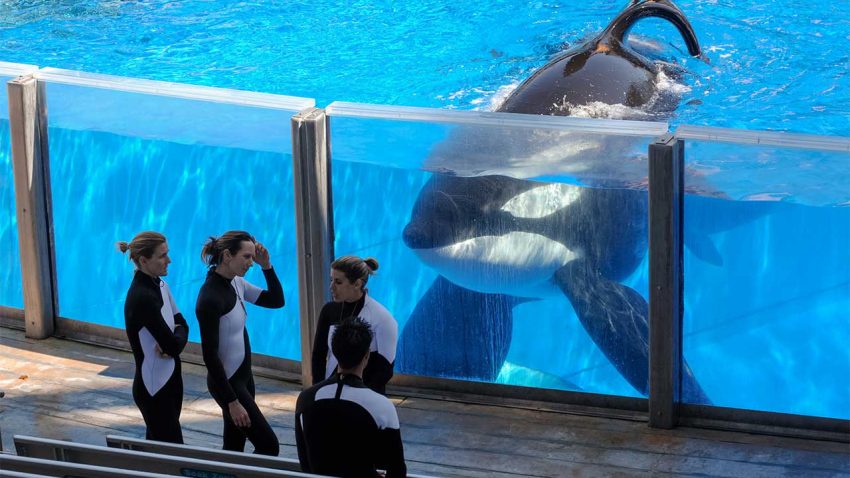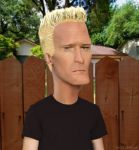As SeaWorld stops breeding orcas, what are the impacts for research? By David GrimmMar. 17, 2016 , 2

Tags: USA
As SeaWorld stops breeding orcas, what are the impacts for research? By David GrimmMar. 17, 2016 , 2 published by Evanvinh
Writer Rating: 5.0000
Posted on 2016-03-18
Writer Description: Evanvinh
This writer has written 733 articles.
SeaWorld announced today that it will end orca breeding at all of its marine parks and phase out its killer whale shows. The move comes after years of pressure by animal rights and animal welfare advocates, including some scientists who have argued that these animals shouldn’t be kept in captivity.
“I’m thrilled and very, very proud of the stance that SeaWorld is taking,” says biopsychologist Lori Marino, the executive director of The Kimmela Center for Animal Advocacy in Kanab, Utah, which aims to inject more science into the animal advocacy movement. “They are clearly evolving as an organization.” But Kelly Jaakkola, the director of research at the Dolphin Research Center in Grassy Key, Florida, calls the move a “surprise” and says it could hinder researchers’ ability to learn more about orcas. “I don’t think it was a science-based decision.”
Animal advocates, including People for the Ethical Treatment of Animals (PETA), have long pressured SeaWorld to free its whales and dolphins, a group collectively known as cetaceans. PETA even filed a lawsuit in 2011 arguing that orcas were “slaves” under the 13th Amendment of the U.S. Constitution. Then came the popular 2013 documentary Blackfish, which cast a pall on captivity by focusing on a SeaWorld orca named Tilikum that had killed several people. (Tilikum is now seriously ill.)
But a handful of scientists have also been pressuring marine parks to release their cetaceans. In 2010, Marino banded together with other scientists, activists, and philosophers to draft a “Declaration of Rights for Cetaceans” declaring that no whales and dolphins “should be held in captivity … or removed from their natural environment.” Marino, whose own work indicated that dolphins were capable of self-awareness and other types of advanced cognition, felt that keeping these social, intelligent animals in marine parks did not justify what could be learned from them. Critics shot back that removing all cetaceans from captivity could curtail important research that could not be replicated in the wild. (There are about 600 cetaceans kept in 34 facilities in North America today.)
It’s unclear just how much research was being done on SeaWorld’s orcas. Marino says it was minimal. But Heidi Harley, a comparative psychologist at the New College of Florida in Sarasota who has studied cetaceans at a variety of marine parks and was advising SeaWorld on improving its orca enclosure in San Diego, California, says important work on breeding and physiology was being done. “A lot of what we know about killer whale health has come out of SeaWorld research.” This work, she says, is important to conserving these animals in the wild. “As the climate changes and the ocean changes it would be nice to know how flexible these animals are and what impact a changing environment will have on them. There are so many questions.”
SeaWorld says it will keep its remaining orcas until they die—which for some could be decades from now—but that it will turn its attention to “natural orca encounters” and programs that emphasize “orca enrichment, exercise and overall health”, rather than theatrical shows. It made no announcement about its dolphins, which Marino and other advocates have also urged them to stop breeding. (In 2014, the National Aquarium in Baltimore, Maryland, announcedthat it was considering moving all eight of its dolphins to a marine sanctuary.)
That’s makes sense to Richard Connor, an animal behaviorist at the University of Massachusetts, Dartmouth, who studies wild dolphins in Shark Bay, Australia, and who supervised a student who studied killer whales at SeaWorld in Orlando, Florida. “I think the move is a good decision for killer whales, who can travel up to 160 km in a day,” he says. “But dolphins are more amenable to captivity, and we’ve just scratched the surface of what we can learn from them.” In the wild, he says, it’s much harder to do controlled experiments and to account for the large amount of variables. “Taking them out of captivity would hamstring this field enormously.”
Shawn Noren, a physiologist at the University of California, Santa Cruz (UCSC), who has studied cetacean development and physiology at marine parks for nearly 20 years, says that the challenge for her and others going forward is to convince the public that the knowledge that can be gained from these animals justifies keeping some of them in captivity. She spends some of her time teaching marine biology to high school students at UCSC’s Long Marine Lab, and she says that before Blackfish came out, “the kids were giddy to meet our dolphins. Now, they want to know why we have these animals in tanks.” She says when she tells them about the research she and others do, the students change their minds. “We need to explain to them why this is important.”
Harley says she sees SeaWorld’s move as part of a larger trend of reevaluating the ethics of keeping cognitively complex animals in captivity, whether it be cetaceans or chimpanzees. “I think about this stuff all the time.” Still, she says, “as the world changes, having more information is better than having less information. Before we interacted with orcas in captivity, we thought they were savage beasts. Now, people hold their infants up to kiss them.”
Sources: http://www.sciencemag.org.db24.linccweb.org/news/2016/03/seaworld-stops-breeding-orcas-what-are-impacts-research
You have the right to stay anonymous in your comments, share at your own discretion.


